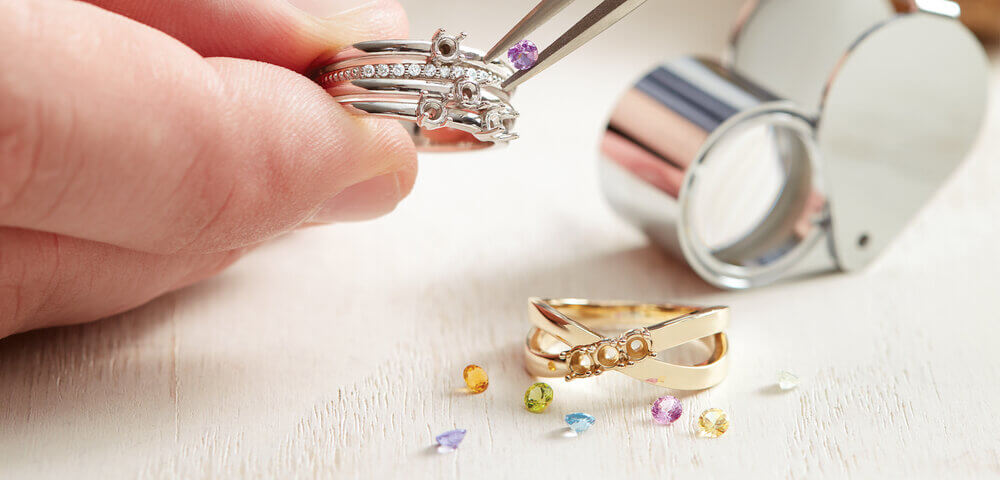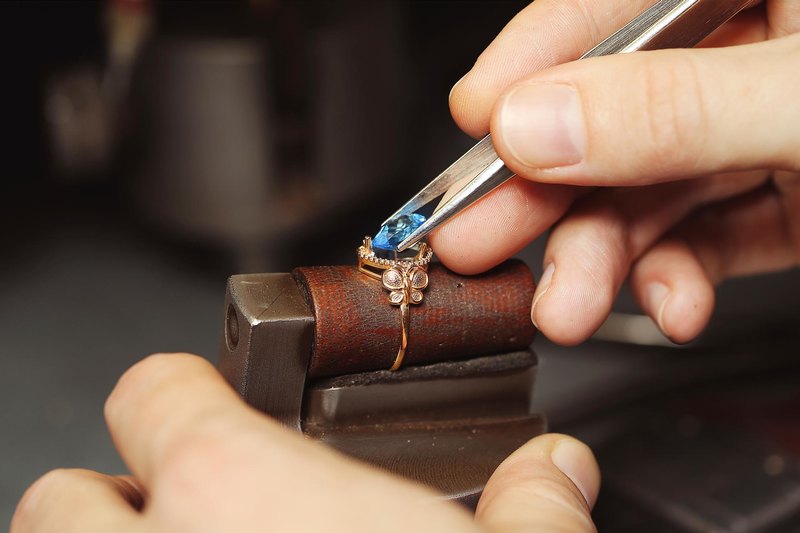With its help, as already noted, you can get a mirror shine and maximum reflection. This process is carried out on a specialized machine, which involves the use of pastes and circles made of leather, felt, cotton material.
Given that jewelry is made not only by hand by highly skilled craftsmen, but also using automated stamping systems, when buying, pay attention to such details as the cleanliness of the work performed, how strong the locks and links, inserts are.
More expensive than gold: 18 most expensive substances in the world. The most valuable is worth 62.5 trillion dollars per gram.
Filigree (filigree)
Filigree (filigree) is a kind of artistic metal processing that has occupied an important place in arts and crafts since ancient times.
The term “filigree” is more ancient; it comes from two Latin words “phylum” – thread and “granum” – grain. The term “scani” is of Russian origin. It originates from the Old Slavic verb “skati” – to twist, twist, twist.
Both terms reflect the technological essence of this art. The term “filigree” combines the names of the two main primary elements from which filigree products are made – these are wire and small balls that complement the wire pattern.
The term filigree emphasizes the main technological feature characteristic of filigree production, namely, that the wire is used in this art form twisted, twisted into cords, which gives filigree products a special beauty and attractiveness.
The thinner the wire is taken in cross section and the tighter, steeper it is twisted, the more beautiful the product is. Especially if the patterns are also complemented by “grain” – this term in Russian scanned

production denoted the smallest balls. However, the term “grain” has almost been lost in modern practice, and now master-scanners more often use the term “kalner” or “corner” – from the distorted German word “corn”, which also means “grain”.
The most ancient monuments of filigree art, dating back to the second millennium BC. e., found in the countries of Asia Minor and Asia Minor, in Egypt, as well as on the territory of the USSR – in the Caucasus, where a golden necklace and a goblet decorated with twisted cords and grains were found in burial mounds along the Tsalka River during archaeological excavations.
The most ancient works of filigree art are characterized by the predominance of granulation, and smooth or twisted wire is rare.
Items decorated with grain are also characteristic of Scythian art. The grain also continues to be a typical motif for filigree products of the 10th and 11th centuries. Such products were sometimes almost completely covered with fine grain and on a small object, for example, on star-shaped kolts from the village. Crosses (X century) have up to six thousand grains with a diameter of not more than 0.5 mm on each kolt.
There is a wide variety of types and varieties of filigree, which are most often denoted by the following names:
Soldered filigree (filigree) is an artistic processing, when a pattern of wire (smooth or twisted), as well as granulation, is soldered directly onto sheet metal. Soldered filigree has the following varieties:
a) background, or deaf, filigree – the simplest case, when a filigree pattern is soldered onto sheet metal, sometimes the background is additionally chiseled;
b) punched, or cut, filigree, in which, after soldering the pattern, the background is removed either by punching or sawing;
c) embossed filigree according to embossing – a filigree pattern is soldered onto a pre-prepared embossed relief;
d) soldered filigree with enamel or cloisonne enamel, in which, after soldering the filigree, all the spaces between the partitions formed by the filigree, or part of them, are filled with enamel.
Openwork filigree is a processing in which a pattern consisting of elements made of wire is soldered only to each other, without a background, forming, as it were, a metal lace, and the grain used in this case is soldered onto this lace.
Openwork filigree has the following varieties:
a) flat openwork filigree – the whole object is a flat (two-dimensional) lace formed by wire parts soldered together in one plane.
b) openwork filigree with enamel, or “window” enamel – openings, cells between filigree details are filled with transparent, translucent enamel, forming, as it were, a miniature colored stained-glass window;
c) sculptural-relief openwork filigree – the product is a sculptural, three-dimensional relief (sometimes high relief), formed from openwork filigree;
d) multifaceted, or complex, filigree – a filigree pattern consisting of two or many planes soldered one on top of the other, that is, when a new pattern lying in a different plane is superimposed and soldered on the lower pattern, which serves as a background; a third plan can be built on it, etc. Thus, the product acquires a three-dimensional character.
Volumetric filigree. It includes three-dimensional objects made using scanned technique – vases, cups, trays, caskets, boxes, three-dimensional images of animals, birds, architectural forms, etc. Such products are made from separate parts, which are then assembled into a whole composition.
Individual elements are prefabricated according to their scans using one or more types of scanning equipment from those described above. The product can be made of soldered filigree (background) with enamel or embossing, or simple or multifaceted (complex) openwork filigree, etc. stones and enamel, etc. This gives a special richness and beauty to the whole composition as a whole.
Such a wide variety of types and techniques of filigree did not arise immediately. They were formed during the centuries-old development of scanning technology. The entire technological process for the production of filigree products (regardless of its size and complexity) includes the following operations:
preparatory operations. The project of a filigree product, made by the artist, is first of all broken down into its component parts, and a development is drawn for each volumetric part (this is not necessary for planar products). Then the whole drawing is divided into its constituent elements and for each element the thickness and type of wire (filament, smoothness, lace) are set.
Scan preparation. The materials for the manufacture of filigree are pure metals: gold, silver, copper. Their alloys are usually not used for this purpose for two reasons: firstly, they have less ductility and toughness; they are more rigid and resilient, and this makes it difficult to draw the wire, twist it, and set the filigree. Secondly, the melting point of alloys is lower than that of pure metals, which makes it difficult to solder products. Filigree is made of wire; if it does not correspond in thickness to the section indicated on the drawing (or sample), it is pulled through the corresponding die of the drawing board.
Scan set. The process of typing a scan according to a drawing consists of two operations:
bending each element of the pattern from the corresponding wire blank (filigree, smooth surface or cord)
installation of such an element in the appropriate place and fixing with glue.
It is most advisable to pre-prepare all the details of the picture (curls, rings, ovals, etc.), and then install them in place. This work is carried out with the help of special-shaped tweezers – a forceps, which is a steel strip folded in half with a width of 10 to 15 mm and a thickness of 1 to 2 mm. The total length of the tweezers is 100-150 mm and it is picked up by hand; the ends of the tweezers are short-pointed and slightly bent inwards. They work with tweezers, holding it in the right hand, and hold the free end of the wire with the nail of the index finger of the left hand. This work is carried out on a special, flat metal plate (made of zinc or aluminum) measuring 150X200 mm and 2-3 mm thick.

There are four ways to set filigree depending on its type (and variety).
Soldered filigree (background). In this case, the drawing is transferred to a prepared (annealed, bleached, washed and dried) blank of sheet metal (gold, silver, red copper), corresponding in thickness, size and configuration to the drawing and intended for the background.
Volumetric background filigree. Scanning for this type is carried out on pre-embossed, stamped (or hand-blown) three-dimensional forms – cylinders, cones, spherical surfaces or on even more complex forms – flowers, leaves, images of animals, etc. – chased reliefs. It is much more difficult to make a set on a three-dimensional form or relief compared to a plane, since the elements of the picture must first be bent in shape so that they fit snugly against the background. Therefore, in the manufacture of cylindrical or conical products (having one curvature), they often use a scan set for flat scans of these figures, and after soldering the filigree to the background, a cylinder or cone is rolled up from such a scan.
Set of flat openwork filigree. A set of this type of filigree is produced using nitro-lacquer on writing paper (earlier, as well as for background filigree, carpentry glue was used). To do this, the drawing is transferred to paper and the set is carried out in the same way as on sheet metal. However, in this case, the density of the set is of particular importance, since when soldering, the details of the pattern should be firmly soldered only to each other due to the absence of a background.
A set of volumetric openwork filigree. A set of this type of filigree is produced on special templates from low-carbon steel; the best material is black decapir 0.5-0.8 mm thick or ordinary roofing iron. Templates are made manually by difovka or on a spinning machine. They must be solid without soldered seams; for this reason, mounted templates are not suitable, since during the soldering of the filigree, which is performed on the template, the seams can be unsoldered and ruin the work. The set on steel templates is produced in the same way as with volumetric background filigree, with the only difference being that after soldering the openwork filigree is not soldered to the template and can be easily removed from it. Often openwork volumetric products and reliefs are made differently.
